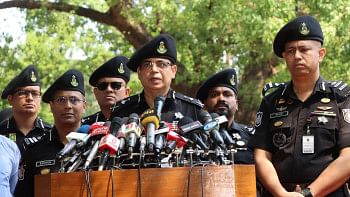400 years of Dhaka
DHAKA City has crossed the enviable milestone of 400 years as the oldest city in this part of the subcontinent. The event was officially inaugurated on Friday with the chief adviser of the caretaker government cutting the ribbon. The celebrations would continue for three years to mark the grand occasion. Founded by the Mughals in 17th century, Dhaka saw rapid growth during the British Raj in the late 19th and early 20th century, a period when many eye-catching office buildings and residential quarters were built and concrete roads constructed. Residents were introduced to electricity, telephone and automobiles, and new destinations were brought under the railway and steamer network. For the first time in late '30s and early '40s new residential enclaves were built up in a planned way. In fact, by the 40s Dhaka became a modern city worth its name. Lofty trees, large ponds and playgrounds became some of the integral features of Dhaka.
In the modern era, Dhaka has been a witness to some historic events like the Language Movement of 1952, student uprising of 1969 and Liberation War movement of 1971. After the creation of Bangladesh, for further modernisation, many of the grand edifices were brought down to make space for high-rise buildings. The canals crisscrossing the city have been filled up to construct roads thereby blocking the natural flow of rainwater and wastes to the rivers surrounding the city. In the '80s and '90s there was a frenzy of property development in a haphazard manner causing roads and lanes to get narrower. It soon contributed to acute crisis of water, gas, electricity and waste disposal, which has now become a major problem.
The maddening rush of people from the rural areas to Dhaka in search of livelihood forced poor people to take shelter in the numerous slums. The ever-increasing population soon began to encroach and pollute the rivers surrounding the city. The once ebullient Buriganga and the Turag today look like shadows of their former selves with human and industrial wastes turning waters murky. The call to save these two rivers rang out again and again from various quarters but it has mostly fallen on deaf years.
Celebration of 400 years of Dhaka is an auspicious occasion but mere festivity missing out on what needs to be done to make the city really viable would be an exercise in futility. We strongly believe political leadership must come to recognise the imperative of saving Dhaka with the help of all stakeholders.

 For all latest news, follow The Daily Star's Google News channel.
For all latest news, follow The Daily Star's Google News channel. 



Comments